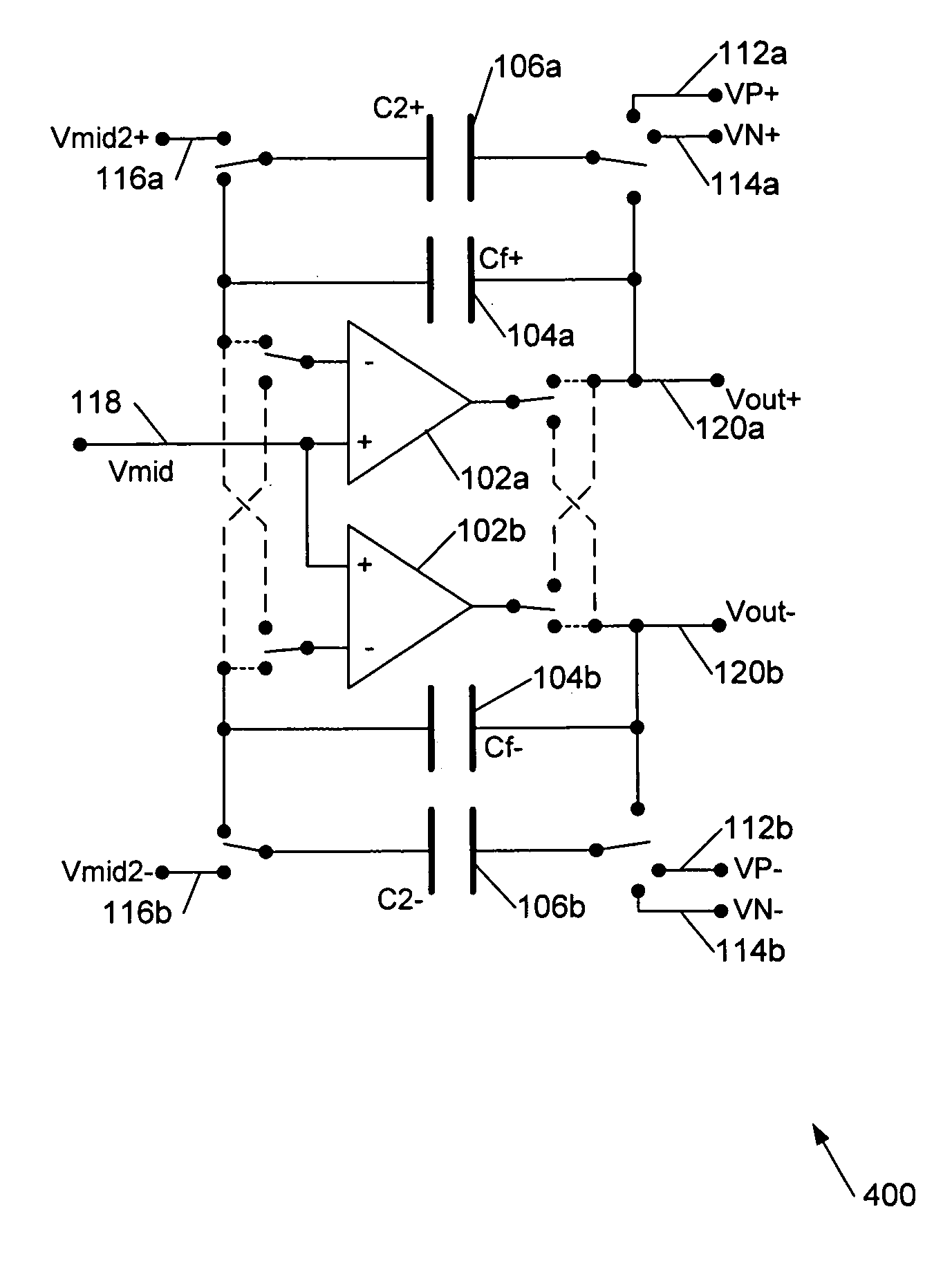Digital-to-analogue converter circuits
a digital-to-analog converter and circuit technology, applied in the field of digital-to-analog converters, can solve the problems of uneconomic supply of a digital-to-analog converter for each channel, flicker noise (sometimes called 1/f noise), and important manufacturing cost, so as to improve the rejection of audio frequency supply ripple, less crosstalk, and chip area saving
- Summary
- Abstract
- Description
- Claims
- Application Information
AI Technical Summary
Benefits of technology
Problems solved by technology
Method used
Image
Examples
Embodiment Construction
[0073]Referring to FIG. 5a, this shows a differential DAC circuit 500 including chopper switches 501a,b, 502a,b to reduce the signal-dependent reference loading. The DAC circuit of FIG. 5 is a development of that shown in FIG. 2 (like elements are indicated by like reference numerals) and comprises a pair of DAC circuits 500a,b to provide a differential output 520a, b.
[0074]Capacitor 106a is still charged to VP or VN via switches 110a, 108a. However, rather than discharging directly via switches 110a, 108a onto capacitor 104a, it discharges onto either capacitor 104a or 104b, via additional connections 503, 505, and 504, 506, according to the polarity of additional series switches 501a, 502a. There is a similar arrangement for capacitor 106b. The switches 501a, 501b, 502a, 502b may be switched to alternate every cycle giving a 4-phase clocking scheme as shown in Table 5a (below) or every second cycle giving an 8-phase clocking scheme as shown in Table 5c. Other possible clocking sc...
PUM
 Login to View More
Login to View More Abstract
Description
Claims
Application Information
 Login to View More
Login to View More - R&D
- Intellectual Property
- Life Sciences
- Materials
- Tech Scout
- Unparalleled Data Quality
- Higher Quality Content
- 60% Fewer Hallucinations
Browse by: Latest US Patents, China's latest patents, Technical Efficacy Thesaurus, Application Domain, Technology Topic, Popular Technical Reports.
© 2025 PatSnap. All rights reserved.Legal|Privacy policy|Modern Slavery Act Transparency Statement|Sitemap|About US| Contact US: help@patsnap.com



